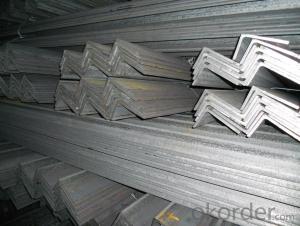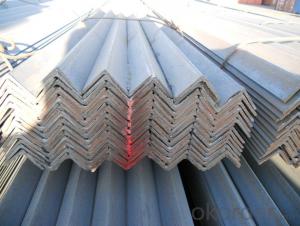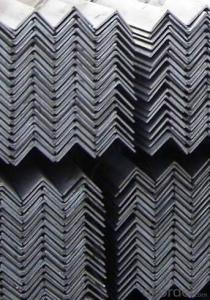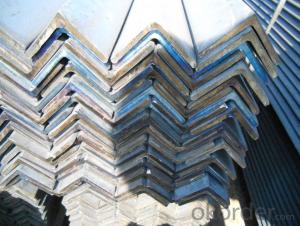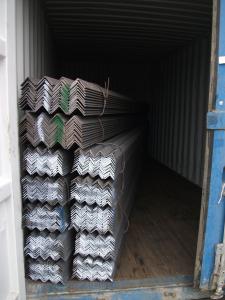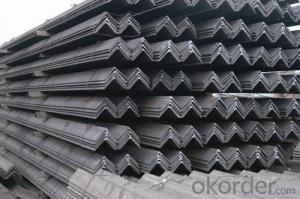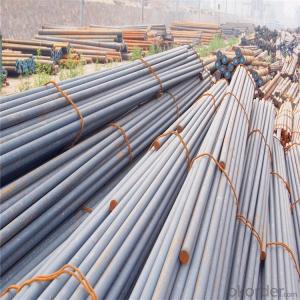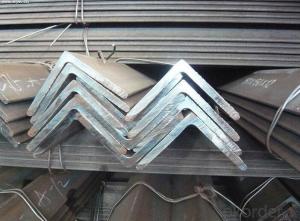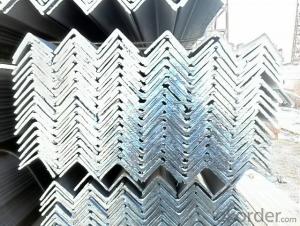S355JR Equal Unequal Angle bar building materials
- Loading Port:
- Tianjin
- Payment Terms:
- TT OR LC
- Min Order Qty:
- 25 m.t.
- Supply Capability:
- 25000 m.t./month
OKorder Service Pledge
Quality Product, Order Online Tracking, Timely Delivery
OKorder Financial Service
Credit Rating, Credit Services, Credit Purchasing
You Might Also Like
Specifications
Specifications
A36 equal angle steel in Shanghai
Prompt delivery,Premium quality
Accept customized sizes
Accept client's LOGO
A36 carbon steel iron angle sizes | |
| Size | 25mm*25mm-500mm*500mm |
Wall thickness | 2.0mm-25mm |
Length | 1m-12m ,by customer’s requiremnts |
Internatioanal Standard | ISO 9001-2008 / ISO 630 / |
Standards |
ASTMA53/ASTM A573/ASTM A283/Gr.D/
BS1387-1985/
GB/T3091-2001,GB/T13793-92, GB/T6728-2002/ ISO630/E235B/
JIS G3101/JIS G3131/JIS G3106/
|
Materials |
Q195,Q215,Q235B,Q345B,
S235JR/S235/S355JR/S355
SS440/SM400A/SM400B |
Product Category | Metallurgy,Mineral &Energy |
Technique | Welded |
Packing | 1.Big OD:in bulk 2.Small OD:packed by steel strips 3.woven cloth with 7 slats 4.according to the requirements of customers |
Usage | Mechanical&manufacture,Steel strcuture, Shipbuilding,Bridging,Automobile chassis |
Main market | Middle East,Africa, Asia and some Uropean country and America , Australia |
Country of origin
| China |
Productivity | 15000 Metric Tons pet Month |
Remark | Payment terms :T/T ,L/C Terms of trade :FOB ,CFR,CIF ,DDP,EXW Minimum order : 10 tons Lead time :on or before 3-15 working days . |
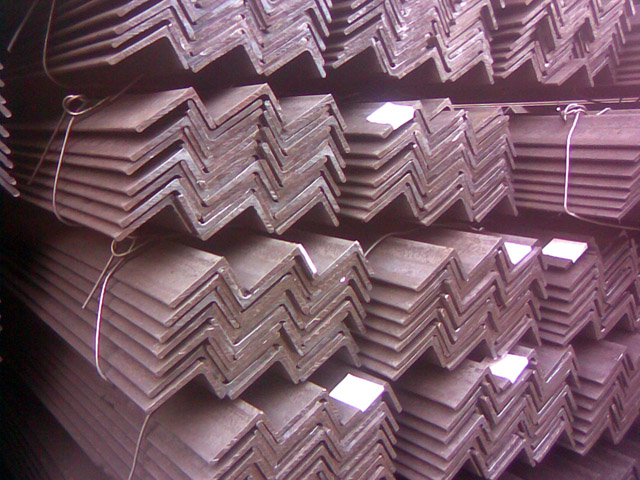
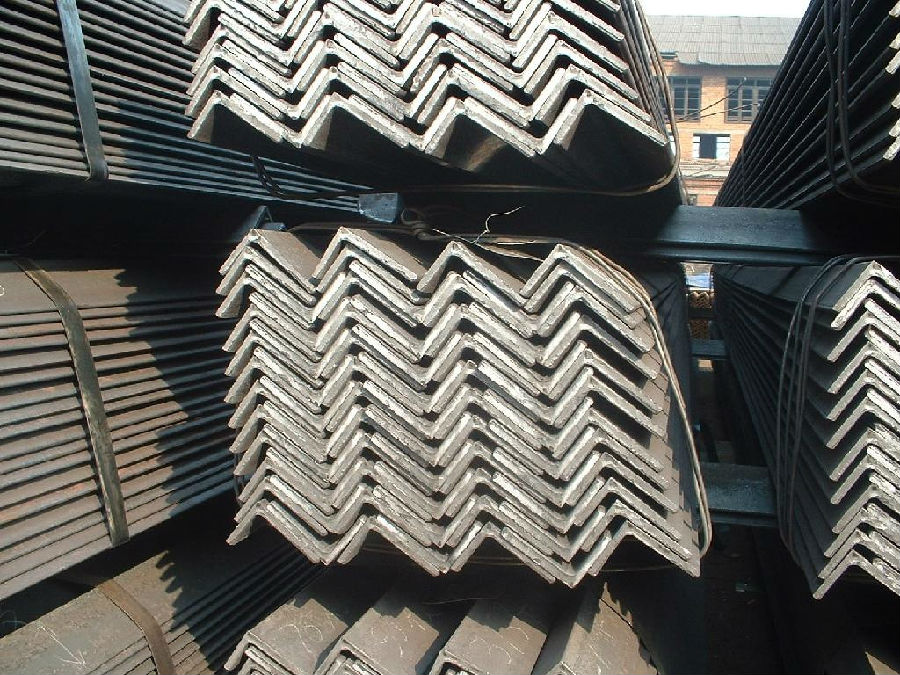
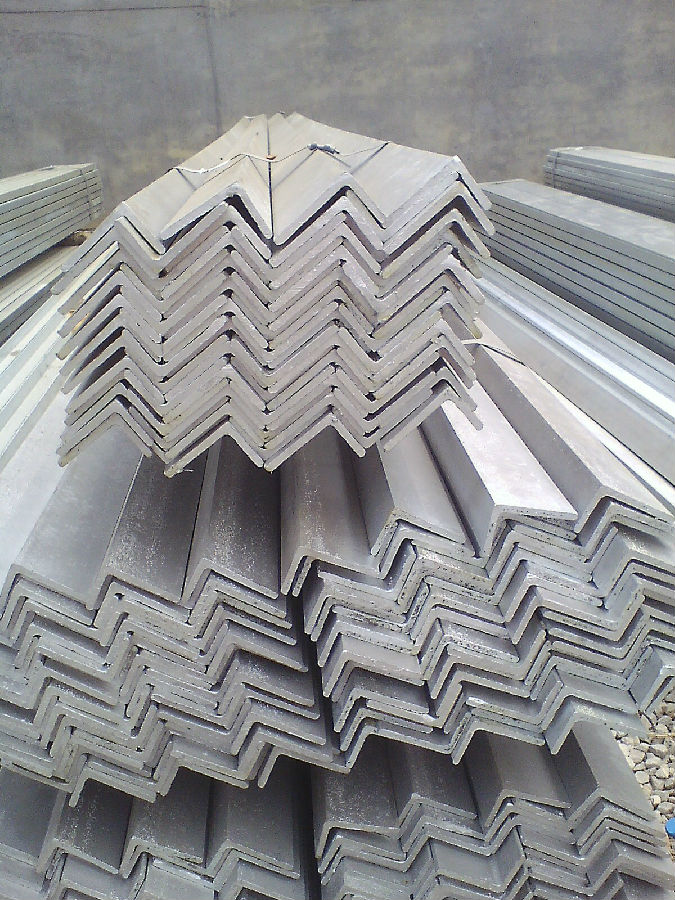
- Q: Can steel angles be painted over?
- Yes, steel angles can be painted over. Prior to painting, it is important to ensure that the surface is clean and free from any dirt, oil, or rust. This can be achieved by using a wire brush or sandpaper to remove any loose particles and then wiping the surface with a clean cloth. Once the surface is properly prepared, a primer specifically designed for metal surfaces should be applied to promote adhesion and prevent corrosion. After the primer has dried, a suitable paint can be applied using a brush, roller, or spray gun. It is recommended to use paints that are specifically formulated for metal applications to ensure proper adhesion and durability. Regular maintenance and repainting may be required over time to maintain the appearance and protect the steel angles from corrosion.
- Q: Can steel angles be used for support structures?
- Support structures can indeed utilize steel angles. In the construction and engineering sectors, these angles are frequently employed for a range of purposes, including delivering stability and support to structures. The inherent L-shape of steel angles facilitates simple bolting or welding, rendering them ideal for crafting robust and long-lasting support structures. Common applications include building frames, roof trusses, bridges, and industrial platforms. Furthermore, steel angles possess exceptional load-bearing capacity and the ability to withstand bending and twisting forces, thus establishing themselves as a dependable option for support structures.
- Q: Can steel angles be used in seismic or high-wind areas?
- Steel angles can indeed be utilized in areas that experience seismic activity or strong winds. Their strength and durability make them a popular choice in construction. Steel angles serve as a reliable source of structural support and are capable of withstanding seismic forces and high winds, as long as they are designed and installed correctly. It is important to adhere to specific building codes and regulations when using steel angles in these areas. These codes and regulations are in place to guarantee that structures can withstand the forces generated by earthquakes or strong winds. To meet the required safety standards, engineers must consider various factors, such as the appropriate size, configuration, and connection details of the steel angles.
- Q: What are the different methods of surface powder coating for steel angles?
- Surface powder coating for steel angles can be achieved through various methods, each serving the purpose of providing protection and enhancing aesthetics. 1. One commonly used technique is electrostatic spraying, where a specialized spray gun is employed to apply the powder coating onto the steel surface. The powder particles, carrying a positive charge, are drawn towards the grounded steel angle, ensuring a uniform and even coating. 2. Another approach is the fluidized bed method. Here, the steel angles are heated and then immersed in a bed of fluidized powder particles. As the steel's heat causes the powder particles to melt, they adhere to the surface, resulting in a smooth and durable coating. 3. The powder coating booth method involves placing the steel angles within a designated booth. Equipped with a powder spray gun, the booth emits a fine mist of powder coating onto the surface. The angles are subsequently cured in an oven to bond and melt the powder particles, creating a robust and long-lasting coating. 4. Combining the advantages of electrostatic spraying and fluidized bed techniques, the electrostatic fluidized bed method offers a more controlled and consistent coating. Preheated steel angles are dipped into a fluidized bed of powder particles while an electrostatic charge is applied, ensuring a uniform application. 5. Tribocharging is an alternative technique where frictional charging is used to apply the powder coating. The powder particles pass through a tribocharging gun, obtaining a positive charge. Subsequently, these charged particles are attracted to the grounded steel angle, resulting in a high-quality and consistently applied coating. Each method possesses its own distinct advantages and suitability for specific applications. The choice of coating approach depends on factors such as desired finish, coating thickness, production volume, and cost considerations.
- Q: What are the common applications of steel angles in the automotive industry?
- Steel angles are commonly used in the automotive industry for various applications such as reinforcing structural components, supporting body panels, creating brackets and mounts, and enhancing overall vehicle safety and stability.
- Q: Can steel angles be used in electrical or telecommunications applications?
- Yes, steel angles can be used in electrical or telecommunications applications. Steel angles are widely used in construction and engineering industries due to their strength and versatility. In electrical applications, steel angles can be used to mount electrical equipment, such as transformers or switchgear, to provide support and stability. They can also be used as structural components in electrical substations or power transmission towers. In telecommunications applications, steel angles can be used as mounting brackets for antennas or satellite dishes. They provide a sturdy and reliable support structure for these equipment, ensuring proper signal transmission. Additionally, steel angles can be used in cable management systems to organize and secure electrical or telecommunications cables. Overall, steel angles are a durable and cost-effective solution for various electrical and telecommunications applications.
- Q: Can steel angles be bolted together?
- Yes, steel angles can be bolted together. Bolting steel angles is a common method of joining them to create various structures or frameworks.
- Q: Are steel angles resistant to fire?
- Fire resistance is generally attributed to steel angles. Steel, being a non-combustible substance, does not burn or aid in the propagation of fire. However, it should be noted that while steel itself is fire-resistant, it can lose its strength when exposed to prolonged high temperatures. In the event of a fire, the temperature can rise rapidly and cause the steel to weaken, potentially compromising the structural integrity of a building or component. To improve fire resistance, fire-resistant coatings such as intumescent paint or fireproofing materials can be applied to steel angles. These coatings offer additional insulation, delaying the steel's exposure to high temperatures and preventing failure. Ultimately, the fire resistance of steel angles depends on several factors, including the duration and intensity of the fire, as well as the measures taken to enhance their fire performance. To ensure the appropriate level of fire resistance for steel angles in a specific application, it is crucial to consult with fire protection experts and adhere to building codes and regulations.
- Q: What are the different types of connections used for steel angles in marine applications?
- In marine applications, the different types of connections used for steel angles include bolting, welding, and adhesives. Bolting involves using bolts and nuts to secure the angles together, providing a strong and easily disassembled connection. Welding involves melting the steel angles together, creating a permanent and reliable connection. Adhesives, such as epoxy or polyurethane, are also used to bond the steel angles, offering a lighter weight and corrosion-resistant connection. Each type of connection has its advantages and suitability depending on the specific marine application and requirements.
- Q: Can steel angles be used for load-bearing walls?
- Load-bearing walls can indeed utilize steel angles. In construction, steel angles serve as a structural component, offering support and stability. They effectively reinforce load-bearing walls, enhancing their strength and rigidity. By evenly distributing the weight of a load, steel angles are well-suited for load-bearing purposes. Nevertheless, it is crucial to ensure that the design and installation of the steel angles align with the wall's specific load criteria. Seeking guidance from a structural engineer or construction expert is advisable to guarantee the correct application of steel angles for load-bearing walls.
Send your message to us
S355JR Equal Unequal Angle bar building materials
- Loading Port:
- Tianjin
- Payment Terms:
- TT OR LC
- Min Order Qty:
- 25 m.t.
- Supply Capability:
- 25000 m.t./month
OKorder Service Pledge
Quality Product, Order Online Tracking, Timely Delivery
OKorder Financial Service
Credit Rating, Credit Services, Credit Purchasing
Similar products
Hot products
Hot Searches
Related keywords
